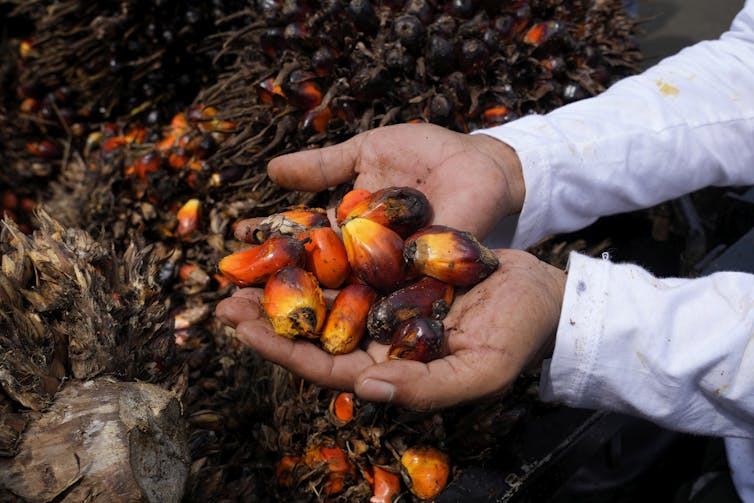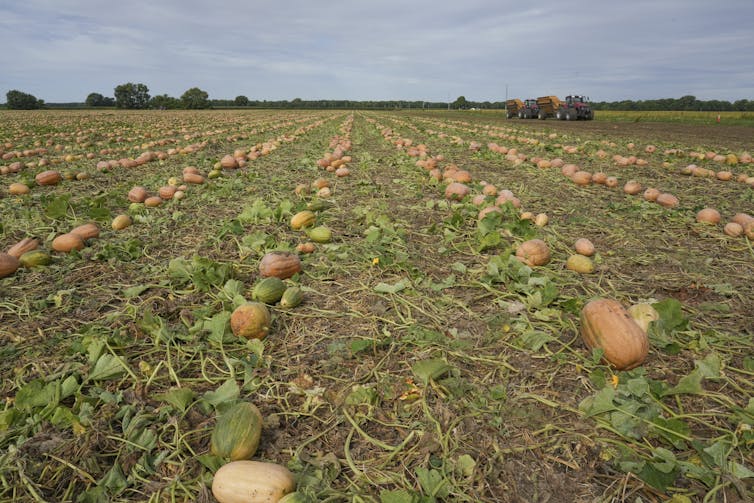Ultra-processed foods (UPF) have become increasingly popular and range from chips to microwave meals and even bread. Even just a casual glance at supermarket shelves reveals a plethora of UPF offerings in all their elaborate and enticing packaging.
Besides their affordability, UPF not only offer time-saving convenience but also momentary satisfaction drenched in saturated fat, sugar, salt and additives. After all, who can resist enjoying a tasty snack when indulging in a football game or an electrifying new TV series?
Although much is discussed about the direct negative impact of these products on our health, including obesity, cardiovascular diseases and diabetes, little has been said about the impacts of UPF on the environment.
What are ultra-processed foods?
UPF can be defined as “formulations of ingredients, mostly of exclusive industrial use, that result from a series of industrial processes” and contain little or no whole foods.
They are made using industrial processing methods that may include moulding, chemical modification and hydrogenation (which can turn liquid unsaturated fat into a more solid form).
The consumption of ultra-processed foods is not new. In Europe, processed products on an industrial scale have been widely consumed since the late 18th and 19th centuries. A 2020 Canadian study shows that the percentage of total purchased calories attributed to UPF in Canada increased from 24 per cent in 1938 to 55 per cent in 2001 and, in 2013, Canadians purchased an astonishing average of 230 kg of UPF per person.

Even more alarmingly, 99 per cent of Canadian adults consume UPF at least once a week. In comparison, 57 per cent of people in the United Kingdom consume some kind of UPF on a weekly basis.
The consumption of UPF in Canada is largely associated with men, youth, those struggling with low income and those with obesity.
Read more: The rise of ultra-processed foods and why they're really bad for our health
Unfortunately, UPF tend to be more affordable than fresh, whole foods. They have a longer shelf life, require no preparation and can be enticing due to high sugar content that trigger feel-good dopamine responses.
However, consuming UPF comes at a high cost not just to our health but to our environment as well.
Cutting costs, raising emissions
UPFs rely on energy-intensive manufacturing processes and long supply chains, leading to substantial greenhouse gas emissions.
The most substantial environmental impacts of UPF-rich diets predominantly stem from the post-farm stages, specifically the final product creation and packaging processes.
One specific additive that has the most environmental impact is palm oil. Palm oil is responsible for deforestation of some of the world’s most biodiverse forests. It is the world’s most consumed vegetable oil that can be found in half of our food.

Another villain is high-fructose corn syrup, which not only leaves a long carbon footprint but is also linked to obesity, high blood pressure and Type 2 diabetes.
Read more: Two surprising reasons behind the obesity epidemic: Too much salt, not enough water
The massive waste generated by over-packaged UPF is another factor to consider. Their plastic packaging doesn’t degrade in landfills or in nature, and has a dramatic impact on soil health and marine life.
One recent study published in Nature Sustainability demonstrates that UPF processing and packaging stages have the greatest environmental impacts of the whole system, and are a major source of environmental waste worldwide.
The path to sustainability
There is no simple answer to the problem, but there are alternatives that can help reduce the pressure on the natural resources available on the planet. Embracing sustainable agricultural practices that prioritize regenerative farming, waste reduction and local sourcing of ingredients can effectively lower the carbon impact of UPF.
In addition, companies should adopt water-efficient technologies and support initiatives that restore natural habitats, as these are essential steps towards water conservation and biodiversity preservation. Public and health agencies need to put pressure on governments to adopt new policies and implement measures that will protect public health and the environment.

Advancements in agricultural technology could play a pivotal role in mitigating the environmental impact of food additives. Precision farming techniques, data-driven decision-making, and AI-driven supply chain optimizations can enhance resource efficiency and reduce waste.
Small and medium-sized agri-food enterprises and small family farms often prioritize sustainable and locally-sourced ingredients, contributing to a more sustainable food system and enhancing biodiversity. Supporting local businesses not only encourages a healthier food ecosystem but also bolsters community resilience and regional economic development.
Indigenous communities as well possess a profound knowledge of sustainable agroforestry practices, and collaborating with these communities can provide essential teachings into more sustainable food production and responsible land and water management.
The environmental impact of ultra-processed foods cannot be ignored any longer. As we become more and more conscious about what we buy and how it is produced, we hold the responsibility to advocate for change.
High rates of UPF consumption indicates an essential failure of our food system to provide universal access to affordable, wholesome food. Whether such a goal is even possible may be up for debate, but what cannot be denied is that our current industry-driven proliferation of UPF is inflicting harm on both our planet and our health.

